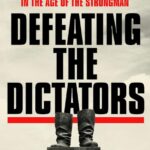Looking back to glimpse the future
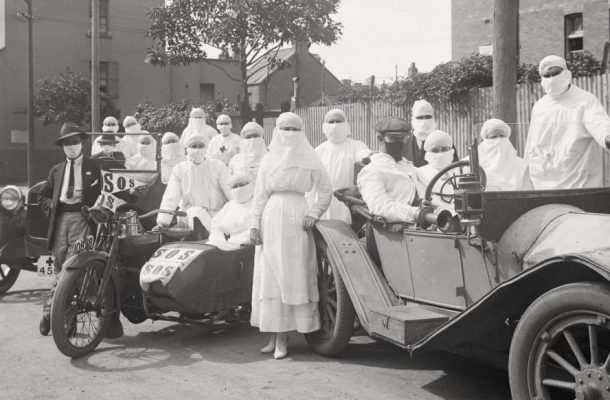
From the ancient world of Athens and Amarna to 19th-century Germany, we see how the perception and impact of plagues and pandemics have always been moderated by social and economic factors, and changed our relationship with politics and with place.
In President Trump’s recent withdrawal from the World Health Organisation, we find parallels with medical diplomacy during the Cold War – and a worrying repudiation of historical lessons well learnt.
The responses of 19th and 20th-century Jews to trauma and persecution offer an unexpected lesson in the importance of humour during difficult times, and the history of photography gives us some clues about how histories of the current pandemic might be written.
As we take tentative steps towards an uncertain post-COVID-19 future, historical reflection can help to ground us by offering perspective and ways to make sense of even our most immediate past.
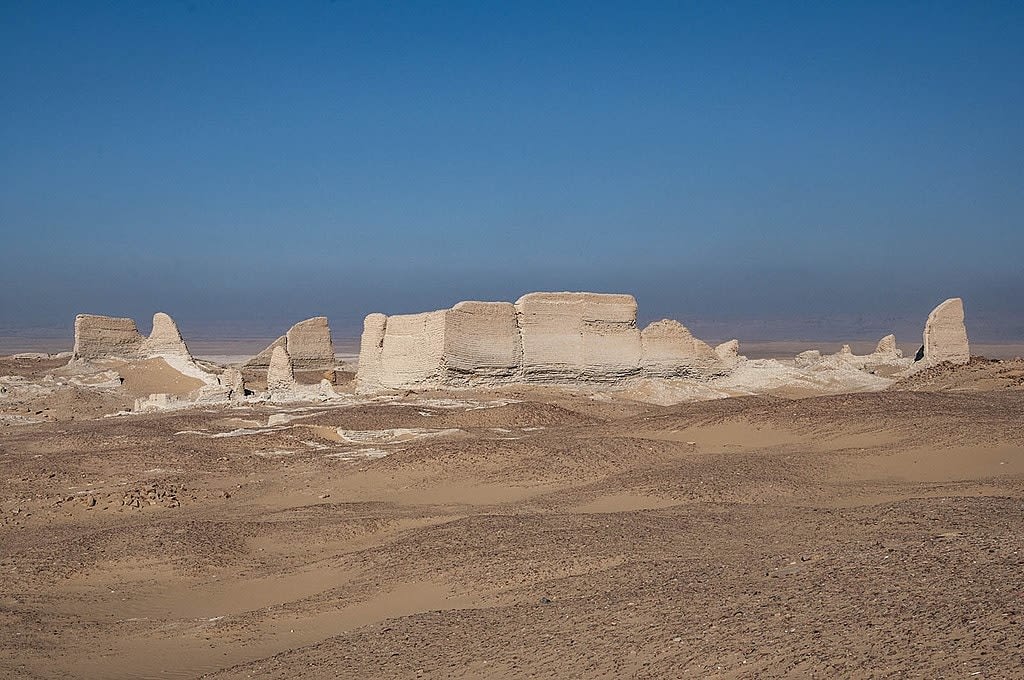 The remains of the Temple of Soknopaios in Soknopaiou Nesos (Dime, Egypt). Photo: Bruno Bazzani
The remains of the Temple of Soknopaios in Soknopaiou Nesos (Dime, Egypt). Photo: Bruno Bazzani
Epidemics in the ancient Mediterranean
Andrew Connor, Lecturer, Centre for Ancient Cultures, Monash University
Epidemic was a recurring part of life in the ancient world. Indeed, among the works attributed to Hippocrates are seven volumes titled Epidemics.
Recently, one ancient epidemic has captured particular attention – the Plague of Athens (430-427 BCE). Vividly described by the historian Thucydides, the plague ripped through Athens, killing Athenians in the tens of thousands, and shaking the city to its core. When Athenians gathered in groups, they “died like sheep”, and when they isolated themselves, they died alone.
In the face of such a calamity, Athenian faith in their laws and gods collapsed — an ordered society was no protection when all seemed fated to die. The institutions of the state were paralysed, and care for the sick and dying fell to friends and relatives. Neither was assistance forthcoming from Athen’s neighbours — their opponents in the ongoing Peloponnesian War. They left the city to suffer alone, doing little but watching the smoke from countless funeral pyres rise over the city.
For all its contagiousness, however, the Athenian plague was not a pandemic. Despite speculation, its origins are unknown, and there are no clear indications of its spread elsewhere, even to its bitter rival Sparta.
If we seek a lesson from the ancient experience with epidemic, it might therefore be this: However long the coronavirus is with us, its legacy will last even longer.
The Antonine Plague, which swept through the Roman Empire in waves between 165 and 180 CE, is a more apt comparandum. Like COVID-19, it was a global illness, travelling along the vast interconnected economic network that linked China and the Indian Ocean to the Roman Mediterranean. While the total death toll is unknown, it could produce pockets of frightening deadliness – a third to a half of the people in some villages in Roman Egypt died.
Like COVID-19, existing treatments were little help — a Roman senator called it “that pestilence so great that it could not be cured by any medicine”. And, like COVID-19, it had an immediate and significant effect on the economy as well as health. That effect, however, seems the result of the mass death rather than any restrictions on visits to the baths, barbers, or blood-sports. The then-thriving village of Soknopaiou Nesos, for example, saw as many as half its residents perish; within decades, it was abandoned.
The social and economic devastation caused by deaths from the Antonine Plague had a long tail, with effects lasting for decades. The economic calculus of locking down or reopening must factor in that point — the societal cost of deaths on a hideous scale. In Athens, meanwhile, the public trust that underpinned their society and laws was badly shaken, and never fully recovered. If we seek a lesson from the ancient experience with epidemic, it might therefore be this: However long the coronavirus is with us, its legacy will last even longer.
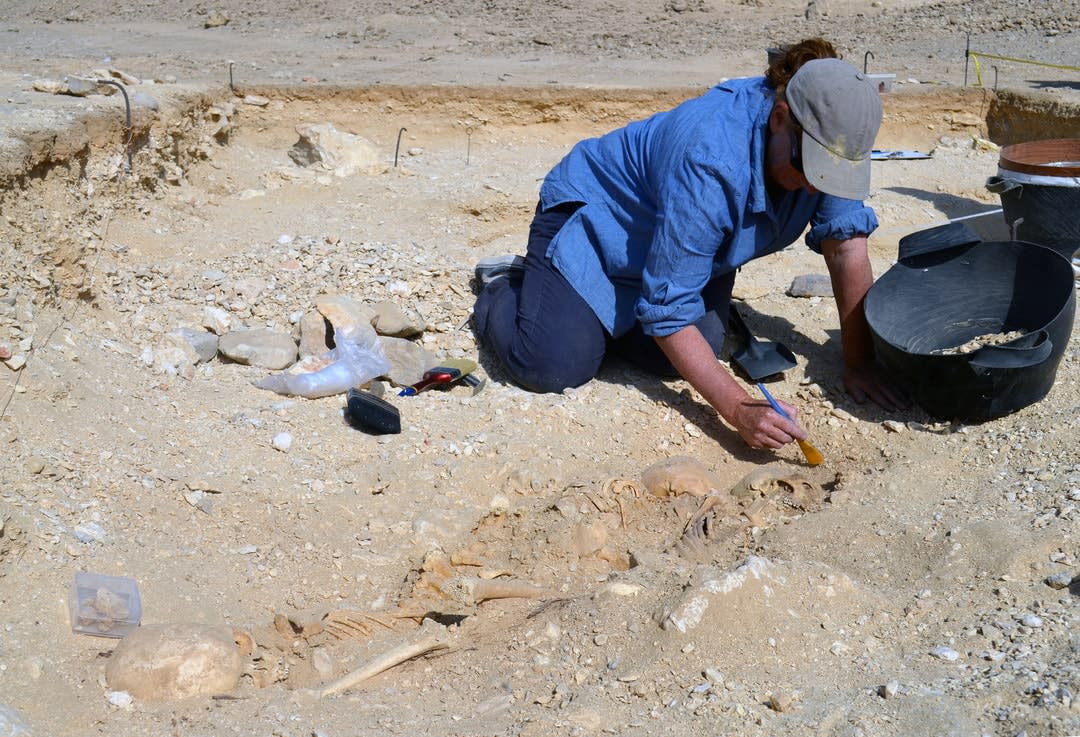 Archaeologist Wendy Dolling excavates a grave containing three sub-adults, who may have been labourers tasked with building ancient Amarna. Diseases such as malaria were rife among their community. Photo: Anna. Stevens.
Archaeologist Wendy Dolling excavates a grave containing three sub-adults, who may have been labourers tasked with building ancient Amarna. Diseases such as malaria were rife among their community. Photo: Anna. Stevens.
Disease, uncertainty, and our urban selves
Anna Stevens, Lecturer, Centre for Ancient Cultures, Monash University
The global pandemic is changing how many of us engage with the places we live, especially in large cities. We’ve been given pause to consider how our locations make us vulnerable, as we redefine the boundaries of our everyday lives. Our cities have become uncertain, or even threatening, spaces, as disease becomes an unseen co-occupant, both real and imagined.
This is a shift of thought for many: the city is not there just to serve us, but is a living entity. This reconnects with ideas about urban space going back well into the distant past.
The archaeological site of Amarna, built some 3000 years ago, is one of the best-preserved cities from the ancient world. It has nearly 1000 surviving houses and more than 10,000 burials. Some believe that Amarna itself was subject to an epidemic, although the evidence is inconclusive. It does, though, provide a rich opportunity to explore the impact of disease on urban society.
Malaria is one identifiable disease at Amarna, with impacts that vary across the city’s population. At one cemetery it occurs at a strikingly high rate of nearly 100 per cent. Almost everyone here had suffered from malaria, although they didn’t necessarily die from it. This cemetery contains the burials of young urban labourers, who worked hard, and probably lived in basic and crowded conditions, perhaps in simple encampments.
At another cemetery, used by the general population living in small mud-brick houses, the preliminary malaria rates are substantially lower. Yet the boy-king Tutankhamun, who spent his childhood at Amarna, also suffered from this disease, in a striking example of how the threat of illness was moderated by wealth and privilege, but in no way eliminated by it.
The Egyptians were likely aware of some of these patterns, but the source and spread of disease was largely unknown to them. It was often attributed to malevolent spirits. They coped, in part, with this hidden threat by weaving protective barriers – physical and ritual, visible and invisible – throughout their cities.
Well-to-do officials at Amarna built high enclosure walls around their villas, while smaller mud-brick houses were arranged so as to cluster tightly together. A householder might seal their home by spreading salves onto the window frames, or encircling the house as they clutched weapons and recited protective spells.
A tomb-builders’ village on the desert edge of Amarna was entirely enclosed within a thick perimeter wall to control the community, but also perhaps to protect it. The villagers constructed a small shrine beside the entranceway, where they may have performed rituals upon entering or leaving the safe space inside.
The tensions between threatening forces and the need to counteract these helped dictate how the ancient Egyptians organised and engaged with their cities. As we now reconfigure our own relationships to the places we live, reshaping boundaries and developing new rituals – pumping out hand sanitiser as we enter the supermarket – our own sensory connections to cities are perhaps being similarly reshaped.
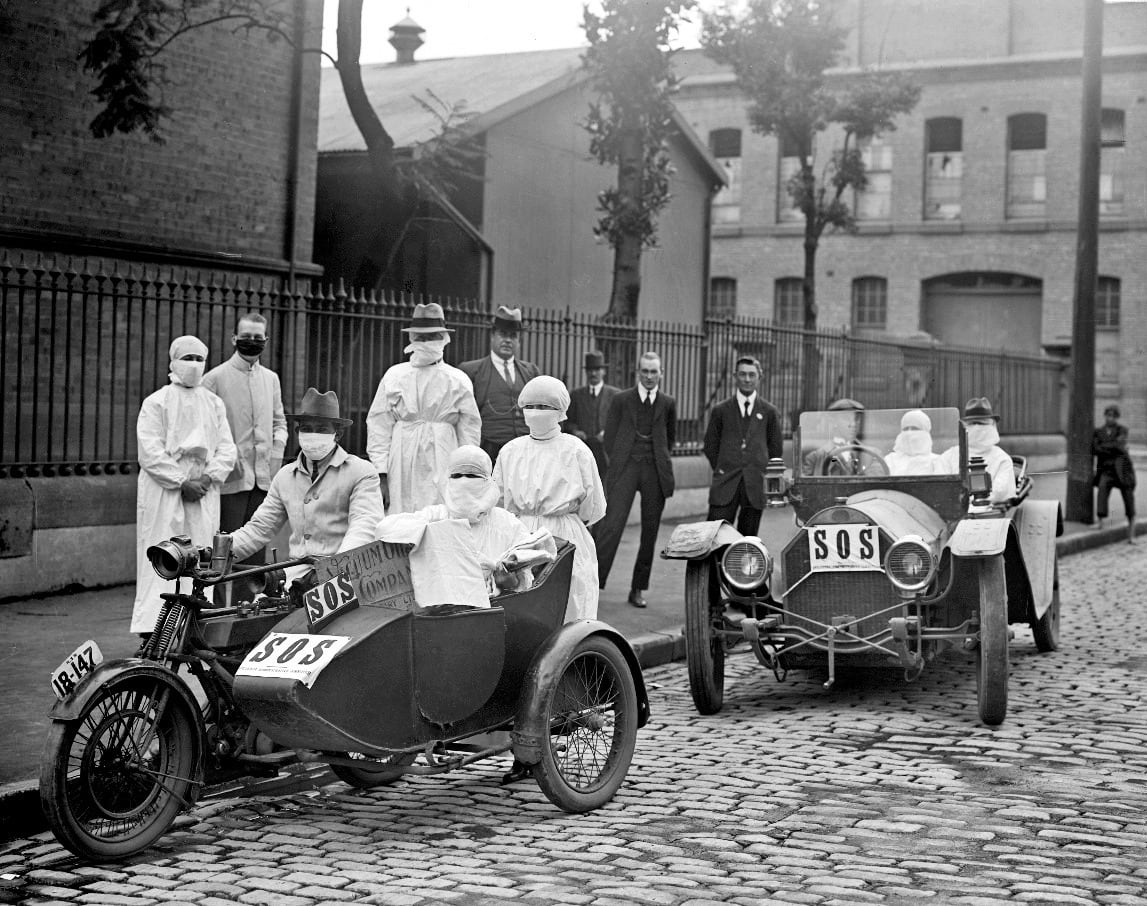 The 1918 Spanish flu was lethal, but not everywhere were levels of public panic the same.
The 1918 Spanish flu was lethal, but not everywhere were levels of public panic the same.
From cholera to COVID-19: infectious disease and social inequality
Michael Hau, Associate Professor, History, Monash University
In the modern period, perceptions and fears of infectious diseases were shaped by changing social and political circumstances. During the 19th century, for example, well-off citizens associated infections with the unhygienic living conditions and irresponsibility of the poor.
But cholera, a water-borne disease leading to severe diarrhoea, dehydration, and death, left a terrifying mark on the psyche of the respectable citizens of Hamburg, when the city was struck in 1892. After all, suddenly losing control over one’s bowels in public was not in line with norms of bourgeois comportment and their requirements of bodily and affective control.
In the 20th century, the flu pandemic of 1918 was terrifying through its sheer lethality. But not everywhere were levels of public panic the same. In the US, the death of about 675,000 people rivalled the human losses of the Civil War, and led to widespread anxiety and panic. In Germany, the deadly impact of the pandemic barely registered in public consciousness, even though German losses were also substantial. Historians estimate that between 320,000 and 350,000 people died as a result of the disease.
The reasons for this significant difference in perception are not hard to understand. The United States was comparatively unaffected by World War I, which overlapped with the flu pandemic for about nine months. In Germany, the lethal impact of the disease was overshadowed by the mortality of the war, hunger, and disease.
Under the strains of war, social and political cohesion disintegrated, and the political order crumbled, resulting in revolution, collapse of the monarchy, and violent confrontations on the streets. In this context, it’s not surprising that the Spanish flu barely registered, and left relatively few traces in public memory and historical writing.
In Germany, the scourges that left a major impact on public health discourse were instead what historians have referred to as scandalised diseases – illnesses that left a mark on public consciousness because they highlighted threats to the moral order (venereal disease and alcoholism), or the pathogenic effects of poverty and social inequality (tuberculosis).
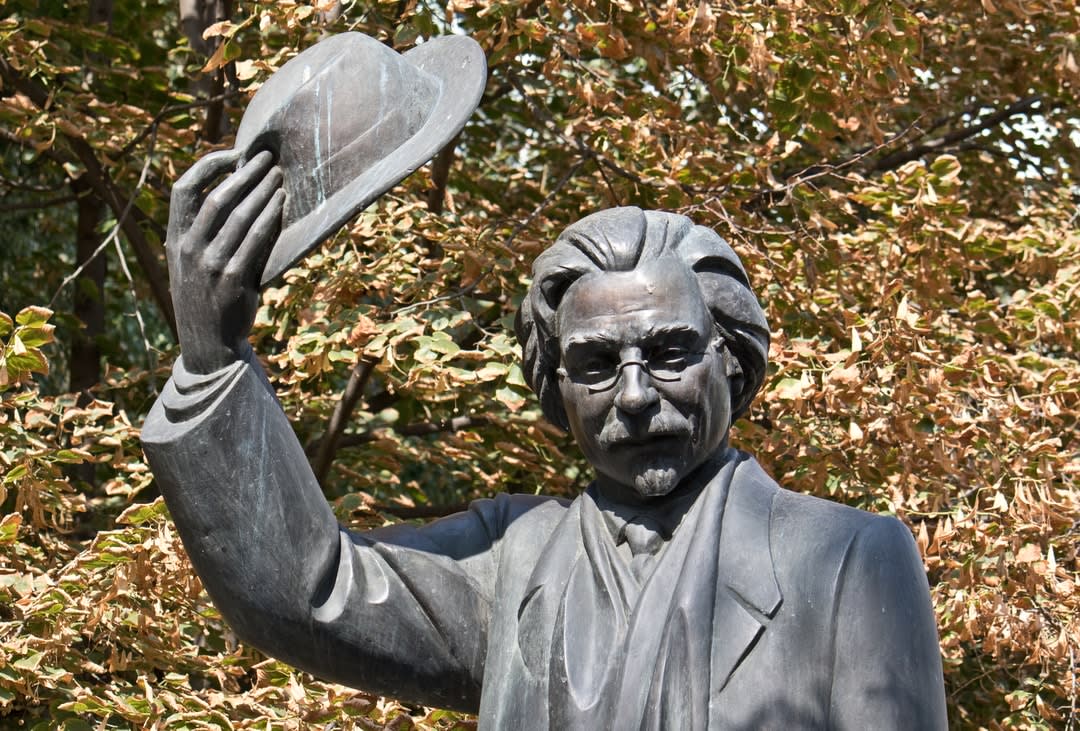
Humour, COVID-19, and the modern Jewish experience
David Slucki, Associate Professor, Australian Centre for Jewish Civilisation, Monash University
Could humour be an antidote to the challenges we face during the coronavirus pandemic? What might Jewish history have to teach us about humour as an antidote to distress?
One of the cornerstones of modern Jewish culture is humour. In a century that witnessed the Holocaust, it might seem strange to think that laughter has been a central feature of 20th-century Jewish life. Yet, it’s precisely the suffering that Jews faced that led to some of the most humorous examples of Jewish culture.
In the late 19th and early 20th century, for example, the beloved Yiddish author Sholem Aleichem wrote humorous stories set against the backdrop of extreme Jewish poverty, pogroms, and struggles to reconcile tradition with modernity. In one story from 1900, The Enchanted Tailor, he famously declared that “laughter is healthy. Doctors prescribe laughter,” as he crafted his distinct approach of “laughter through tears”.
Around the same period, Sigmund Freud – whose theories on jokes came to be hugely influential in the study of humour – identified Jews’ special capacity for self-deprecating humour. Jokes, wrote Freud, served to help Jews subvert the aggression of non-Jews against them, and also were a form of self-criticism.
Laughter doesn’t take away from the magnitude of tragedy the world faces today. On the contrary, it can help us navigate through the darkness, and process the difficult situations in which we find ourselves.
Since the late-19th century then, when there was an uptick in antisemitic riots in Europe, Jews have confronted antisemitism and violence with humour. And, as shown by contributors to the recently-released book I edited, Laughter After: Humour and the Holocaust, humour played a range of roles for Jews in coming to terms with the worst tragedy the Jews faced, the Holocaust – a coping mechanism, a tool of empowerment, and an avenue for social and political critique.
The Jewish experience is instructive for thinking about the world in which we find ourselves today. Humour can provide us with moments of relief when the weight of the world seems to be crushing. The memes that float around social media, for example, give us momentary respite in the form of a chuckle.
Watching the regular videos posted to the Broadway Goes Viral Instagram account, where Broadway performers submit COVID 19-related parodies of musicals, helps to make us feel that we’re part of an audience, combating feelings of isolation by creating a sense of community with those to whom we’re connected now only digitally.
Humour can also be aggressive. It can provide an avenue to hold the powerful accountable, and this is certainly a time when the powerful need to be held to account. A well-crafted joke by a late-night TV host, or a parody video from comedian Randy Rainbow might highlight the gravity of our current situation more effectively and succinctly than a 5000-word exposé.
Laughter doesn’t take away from the magnitude of tragedy the world faces today. On the contrary, it can help us navigate through the darkness, and process the difficult situations in which we find ourselves.
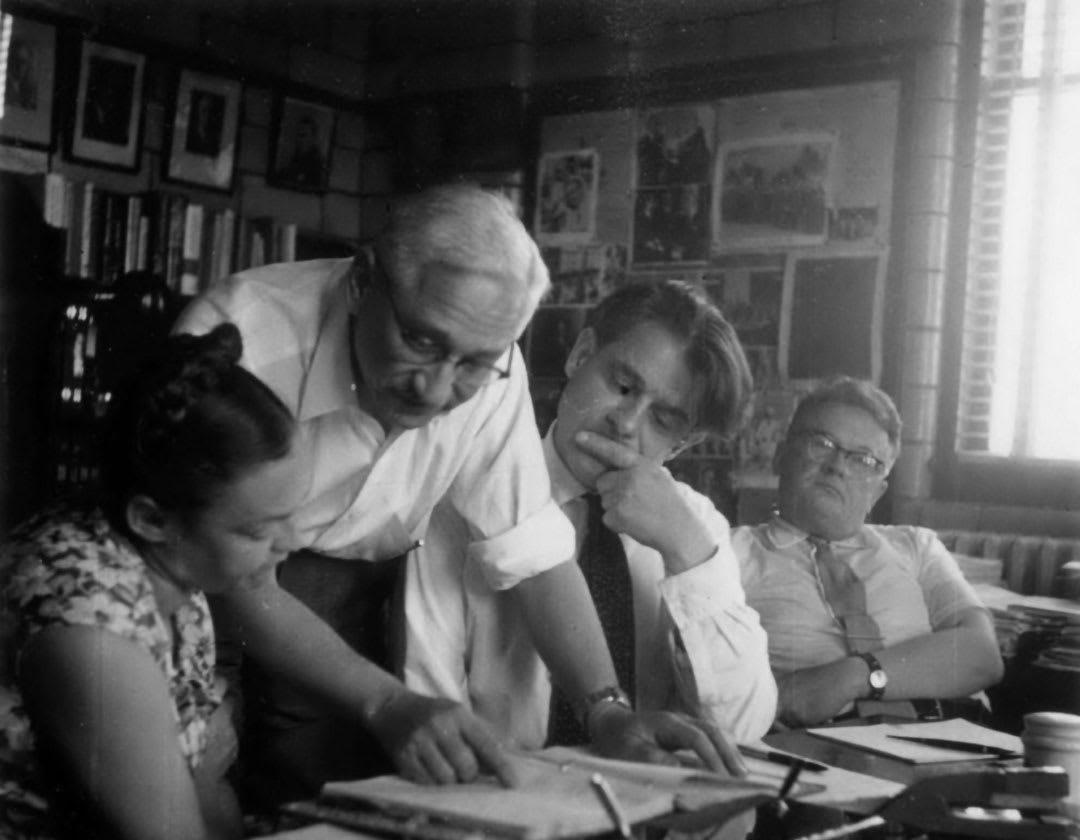 American Albert Sabin (standing) and Soviet colleague Mikhail Chumakov (second from right) collaborating on the polio vaccine. Photo: Hauck Center for the Albert B. Sabin Archives, Henry R. Winkler Center for the History of the Health Professions, University of Cincinnati Libraries
American Albert Sabin (standing) and Soviet colleague Mikhail Chumakov (second from right) collaborating on the polio vaccine. Photo: Hauck Center for the Albert B. Sabin Archives, Henry R. Winkler Center for the History of the Health Professions, University of Cincinnati Libraries
Medical diplomacy for a troubled time
Paula Michaels, Associate Professor, History, Monash University
The COVID-19 pandemic presents the world with a once-in-a-century global infectious disease event. Yet on 29 May, amid this crisis, President Donald Trump announced the United States’ withdrawal from the World Health Organisation. Over the past two months, he had withheld outstanding WHO contributions and threatened to cut off funding permanently. The recent announcement confirms that these expressions of discontent from the organisation’s primary funder were more than mercurial bluster.
The clash between the US and the WHO is the latest in a litany of historical examples of how medicine and health can be instrumentalised in the international arena for political objectives.
During the Cold War, medical diplomacy served a prime asset for the exertion of “soft power” – the effort to win “hearts and minds” through what political scientist Robert Nye describes as an appeal to “the publics of other countries, rather than merely governments”.
The US sent Louis Armstrong to Africa to woo newly decolonised nations away from the developmental promise of Soviet-style socialism. For its part, by bringing to the USSR thousands of medical students from Cuba, Angola, Vietnam, and elsewhere in what was then called “the Third World”, the Soviet government promoted itself at home and abroad as a progressive and generous benefactor.
From its founding in 1948, the WHO had Cold War politics baked into its DNA. Early on it became the site of US-Soviet tussling, culminating in the USSR’s withdrawal in 1949. Multiple factors explain this decision, including political considerations, but, much like Trump, the Soviet government publicly pointed to financial inefficiencies and failed efforts at infectious disease control. With Stalin’s 1953 death, the USSR revitalised its global medical engagement, rejoining the WHO in 1955.
Though not free of problems, the WHO became a venue for meaningful multilateral medical diplomacy, particularly on questions of infectious disease, most notably smallpox. The US and USSR also succeeded in a bilateral quest for a polio vaccine. Whether these efforts translated into winning hearts and minds remains an open question, but preliminary evidence points to the positive impact of such cooperative efforts.
Earlier this month, the US absented itself from a global summit to raise funds for the development and universal deployment of a COVID-19 vaccine. In a striking historical analogy, commentators saw in this withdrawal from medical diplomacy evidence that the coronavirus pandemic may be the United States’ Suez moment – an invocation of how, in retrospect, Great Britain’s inability to resist Egypt’s nationalisation of the Suez Canal in 1956 revealed its diminished standing on the world stage.
America’s retrenchment from medical diplomacy also repudiates one of the most vital lessons of the past for confronting the current crisis: If coronavirus’s spread is to be effectively managed and a vaccine is to be found, the most effective way forward is together.
Future histories of COVID-19 through photography
Susie Protschky, Senior Lecturer, History department, Monash University
How will future understandings of life during the COVID-19 pandemic be shaped by the photographs that are taken during this time?
My research seeks to understand how the frontline camerawork of ordinary witnesses and participants in disaster is crucial for shaping later debates about what we know and how we claim to know it. It shows how narratives of heroism, victimhood, suffering and survival in disaster begin to be formed at the very moment when photographs are made, shown (or hidden), and shared (Protschky 2018, 2020). How will this play out for the current global health crisis?
Searching for visual analogies with past disasters, commentators on the pandemic to date have reached for black-and-white photographs of the 1918-20 influenza pandemic – images showing masked health workers and provisional field hospitals, and queues of unemployed workers during the Great Depression of the 1930s.
Viewed in relation to these images, the acute phase of the current disaster seems to resonate with what we already know from the past. At first glance, it also appears to confirm what scholars of photography often dispute: that images of suffering in disaster can trigger change.
In the Australian case, it certainly seems that images of hospitals in China, Italy and the US overflowing with COVID-19 patients prompted governments toward a stricter lockdown, and that photographs of queues outside our own Centrelink offices hastened the implementation of economic stimulus measures.
In Australia, since we’ve also been careful to honour the dignity and privacy of domestic casualties of the pandemic, we’ve not (yet) seen explicit photographs of our acute phase, even though we have seen such images from overseas. This could have been predicted by scholarship on photography, which shows that news media organisations distinguish between “us” and “them” (foreign victims of disaster) when it comes to showing death and suffering (Zelizer 2010).
My research focuses on amateur photography in past disasters, particularly how it both shapes and diverges from the images we see in news media. It was a century ago, around the 1920s, that amateur photography began to change how disasters are represented, not just for “private” audiences, but for particular publics with their own agendas (Protschky 2019).
Long before social media, amateur photographers have been recording and sharing what official venues have not allowed: candid experiences of death, grief and suffering; the travails of social groups whose experience of disaster is shaped by longer histories of inequality and injustice on racial, class or gender grounds; the everyday decisions taken to survive or even prosper that might publicly be censured as shameful.
If the smartphone has prompted any change in the history of photography, it’s been to elevate amateur practice and everyday life above the professional and the exceptional. It will therefore be in photography of the ordinary, taken in the context of disaster, that we will see the rich future histories of this pandemic.
This article was published by Lens.
Open Forum is a policy discussion website produced by Global Access Partners – Australia’s Institute for Active Policy. We welcome contributions and invite you to submit a blog to the editor and follow us on Twitter, Facebook, Linkedin and Mastadon.











